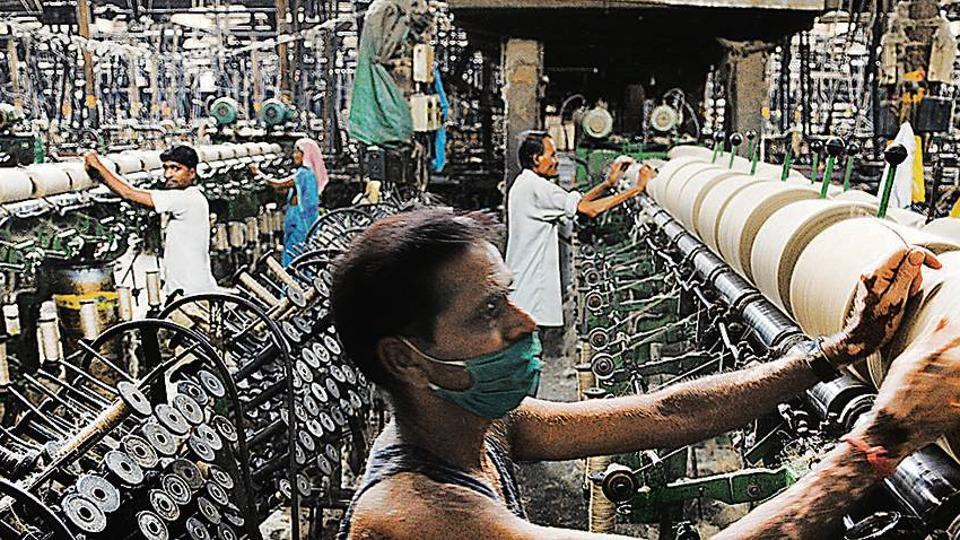The numerous claims and counterclaims on employment numbers make for a dangerous and fascinating read. Thanks to the politicization of employment numbers in anticipation of the upcoming general elections, we are now being overwhelmed with figures from all directions. However, all the studies suffer from majorly serious drawbacks. It’s truly the case of blind men and the elephant.
In July 2018, honorable Prime Minister stated in the Parliament that if both formal and informal sectors were to be considered, then nearly 10 million jobs had been generated in a year.
These new employment numbers were stitched from the Employee Provident Fund and the National Pension Scheme. The number of new professionals joining the system, like chartered accountants and doctors, were also considered to calculate formal employment numbers. However, if employment were rising, then it would have been reflected in higher consumption and savings; but this was not the case. Further, the number of youths migrating from rural to urban areas has hit a roadblock as the real estate market faced stagnation last year due to RERA.
However, the survey conducted by the Centre for Monitoring Indian Economy (CMIE) presents a counterclaim to the 10 million number.
In the absence of timely, publicly released and survey-based employment data from the government, the CMIE gained currency. This private organisation, which maintains economic and business databases, conducts a four-monthly unemployment survey with a sample size of over 178,000 households. This survey indicates that in the year 2018, the number of employed people had shrunk by nearly 10 million. It had shrunk down from 406 million in December 2017 to 396 million in December 2018. The unemployment rate has been estimated at 7.23% in February 2019 as opposed to 5.87% a year ago.
This is not much in contradiction to the leaked NSSO report, which stated that the unemployment rate is 6.1%. This report suggested that unemployment is at a “45 years high”. The 2015-16 Labour Bureau’s Employment Unemployment Survey put such rate at 5%. The Azim Premji University’s State of Working India 2018 puts the unemployment rate at over 5%, with youth unemployment being thrice the overall rate.
At the other end of the spectrum, the unemployment rate reported by the Census 2011 is as high as 11.8%. Yes, that’s correct. The Census put employment numbers at 482.88 million of “main” and “marginal” workers, with unemployment numbers being put at 60.7 million. And we know that there is no data more comprehensive than the ones reported by the Census, where surveyors literally knock on each door to collect information.
So, why are economic data, especially employment numbers, so profusely contradictory and unreliable? How can such data be made more credible?
Conducting surveys in India has always been a tricky affair, with the ever growing population and small changes bringing about unexpected results. But there are specific ways that the government of India, as well as the private sector, can resort to making job data more credible.
Firstly, the NSC needs to be reconstituted and empowered with adequate resources at the earliest for it to function as an independent watchdog. The statistical agencies require strengthening with improved timeliness and accuracy. It has also become necessary to enhance the human resources of these agencies and revamp its internal infrastructure to adapt to the changing data needs and procedures.
Secondly, both CMIE and NSSO suffer from a significantly huge drawback: they base their reports on data collected over months. This implies that they won’t be able to publish their reports at a particular point of time. For instance, if a person is unemployed in January and finds a job in March, they would still be categorized as unemployed by these agencies. The only effective way to report accurate data is by completing the survey in a day – or within a week at best. This, in turn, implies the need for a greater man force and only the government will be able to achieve this. Besides, the CMIE and other sources of data are essential in keeping the government data honest.
Thirdly, the methodology needs to be improved. Under the current methodology, it takes a lot of time and effort to collect data from a small sample size. In rural areas, the number of households surveyed was 55,000 as opposed to 160 million households in the country. Such small sample sizes result in higher data sensitivity. Responses can be facilitated from a higher number of households in a quick span of time through the use of technology.
In the context of the ongoing debate on India’s employment numbers, efforts are immediately needed to improve the availability of quality data in order to resolve narrative driven debate through objective evidence. Such a collection and transmission of quality data by robust institutions is imperative for the development of a strong policy framework.







0 Comments